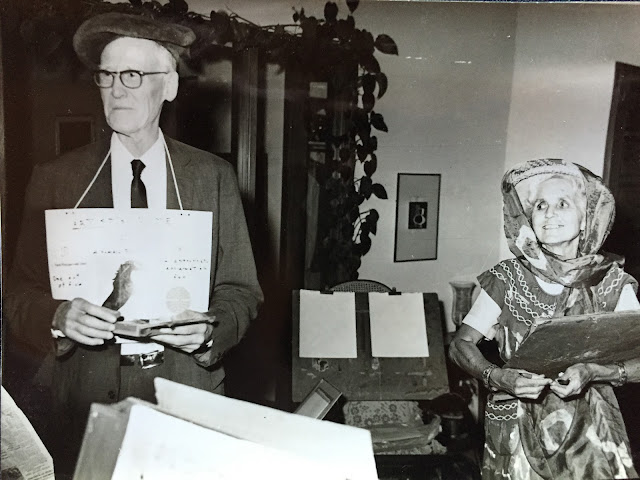My grandfather, Leslie Leavitt, wrote an autobiography written for his family. It's quite detailed and covers his life from his early days in New Hampshire, through Dartmouth College, and on to what was then Syria and Beirut (traveling to Syria, upon graduation from Dartmouth, he met my grandmother for the first time on the Galata Bridge in Istanbul; she also was headed to Beirut). He taught at the Syrian Protestant College's Prep School (later International College) and then was head of IC until his retirement in 1960, when he and my grandmother (Margaret Bliss Leavitt) returned to the States, buying a house in Wellesley. They lived there until their deaths in the 1980's.
There has been a lot of discussion of the building of the houses in Ainab. Here is an extract from my grandfather's autobiography on that subject (I believe this is set in 1932/1933):
"As the summers in Beirut are quite hot and sticky, those who can make every effort to escape to the cool of the mountain villages, returning to their work in Beirut as frequently as required. During our first few years, our family took advantage of various opportunities and tried out, so to speak, Shweir, Brummana, 'Aleih and Shemlan. None of these villages appealed particularly, so we began to look elsewhere, together with some of our closest friends. The result: the Closes, Crawfords, Kerrs, Dodds and Leavitts purchased a lovely pine forest above the village of Ainab: 2700 feet above sea-level, and some 40 minutes by car from Beirut. Our next step was to divide the property into five portions, which we did in such a way that each family pretty much got its first choice.
"Next came the drawing up of plans for our houses and contracting with local builders to have them built...from stone found in abundance nearby. This was followed by the building of a road up from the village of Ainab, the building of a joint wash house, and a tennis court. Our water came from the sky, off the roof and down into a cistern, in our case a cistern under the outdoor dining room. From there it was pumped up into a barrel under the eaves. Our light was supplied by pressure lanterns, our cooking was done over kerosene stoves or "puffers." In addition to our master bedroom, guest room, and porch, we had a wooden "shack" where the boys slept, and another for the maids. The whole outfit was small, simple, adequate...and Oh! so nice. I am certain that every member of the Leavitt family will testify that our summer home, costing only a few thousand dollars, was a joy, a treasure that even today holds a warm place in our hearts and memories.
"I shall have occasion to speak of our Ainab experiences many times as the years pass by, but during those early years when all four children were with us, they are especially memorable. Of events in the grove, one recalls the children making cement roads for their toy vehicles...the gathering, cracking and eating of pine nuts (snobar)...the evening group "sings" by the tennis court, on which occasions Harold Close sang a comic song...rides for the children on the donkey that brought us food supplies. Outside the grove, there were trips...1) to the ever-popular Tom Sawyer's Pool down in the deep valley to the east of our mountain, or 2) to the rock formations and the stream at the Fizur below the village of 'Aleih, or 3) to the Boy Scout Camp at Jisr-el-Kadi down the steep road below Munzerain."
photo of the Leavitt house
1960 watercolor painting of the Leavitt house by Juanita Soghikian (that's me in front of the house, by the lavender bush)
Steve Peters
Princeton, NJ










.jpg)
.jpg)








